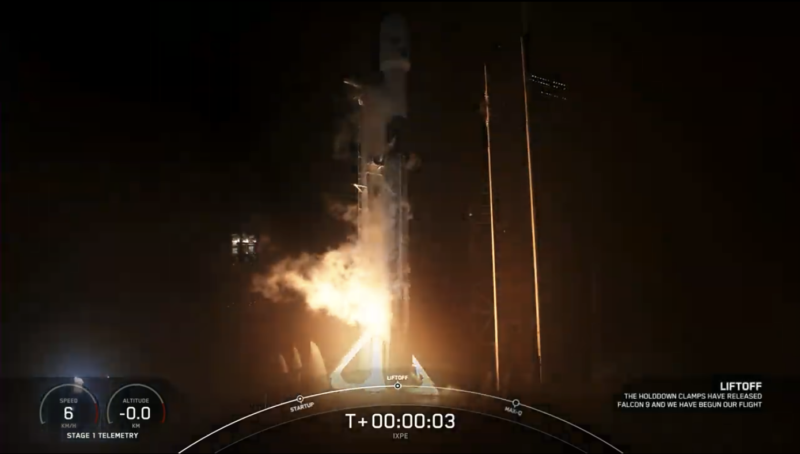
For the third time in a week, the nocturnal sky of the Space Coast turned momentarily into daylight at 1 a.m. EST Thursday, as a five-times-flown SpaceX Falcon 9 booster roared aloft from historic Pad 39A at the Kennedy Space Center (KSC), carrying the Imaging X-ray Polarimetry Explorer (IXPE). “A new set of X-rays to view the mysteries of our skies,” came the call from the launch announcer as the Falcon 9 took flight.
From its orbital perch at 370 miles (600 kilometers) above the Earth, this joint X-ray astrophysics mission features collaboration between NASA and the Italian Space Agency (ASI), as well as partnerships with academia and industry in the United States, Canada and Italy. It seeks to investigate some of the most exotic and powerful objects in the known Universe.
“IXPE represents another extraordinary first,” said Thomas Zurbuchen, associate administrator for the Science Mission Directorate at NASA Headquarters in Washington. “Together with our partners in Italy and around the world, we’ve added a new space observatory to our fleet that will shape our understanding of the universe for years to come. Each NASA spacecraft is carefully chosen to target brand new observations enabling new science, and IXPE is going to show us the violent universe around us – such as exploding stars and the black holes at the center of galaxies – in ways we’ve never been able to see it.”
“It is an indescribable feeling to see something you’ve worked on for decades become real and launch into space,” said Dr. Weisskopf. “This is just the beginning for IXPE. We have much work ahead. But tonight, we celebrate!”
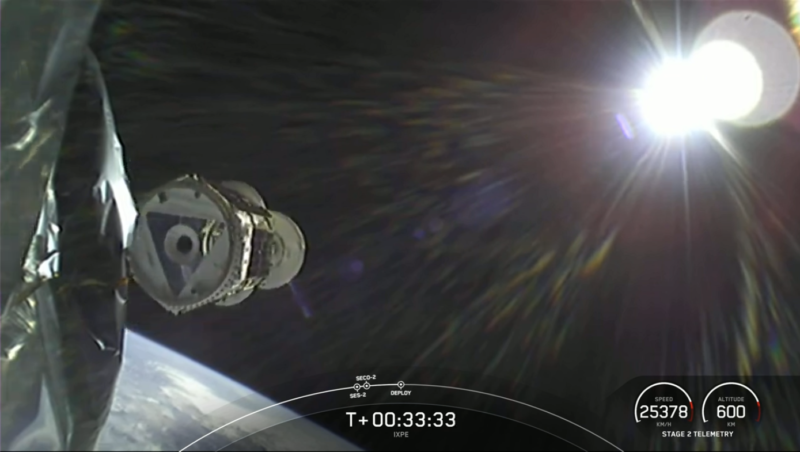
IXPE was one of five low-cost, Explorer-class mission proposals selected by NASA in July 2015 and received an initial $1 million for an 11-month conceptual study. Eighteen months later, in January 2017, the mission was officially green-lighted by the space agency, which lauded IXPE’s scientific potential and the feasibility of its development plan.
“We cannot directly image what’s going on near objects like black holes and neutron stars, but studying the polarization of X-rays emitted from their surrounding environments reveals the physics of these enigmatic objects,” said Paul Hertz, astrophysics division director for the Science Mission Directorate (SMD) at NASA Headquarters in Washington, D.C. “IXPE will open a new window on the Universe for astronomers to peer through. Today, we can only guess what we will find.”
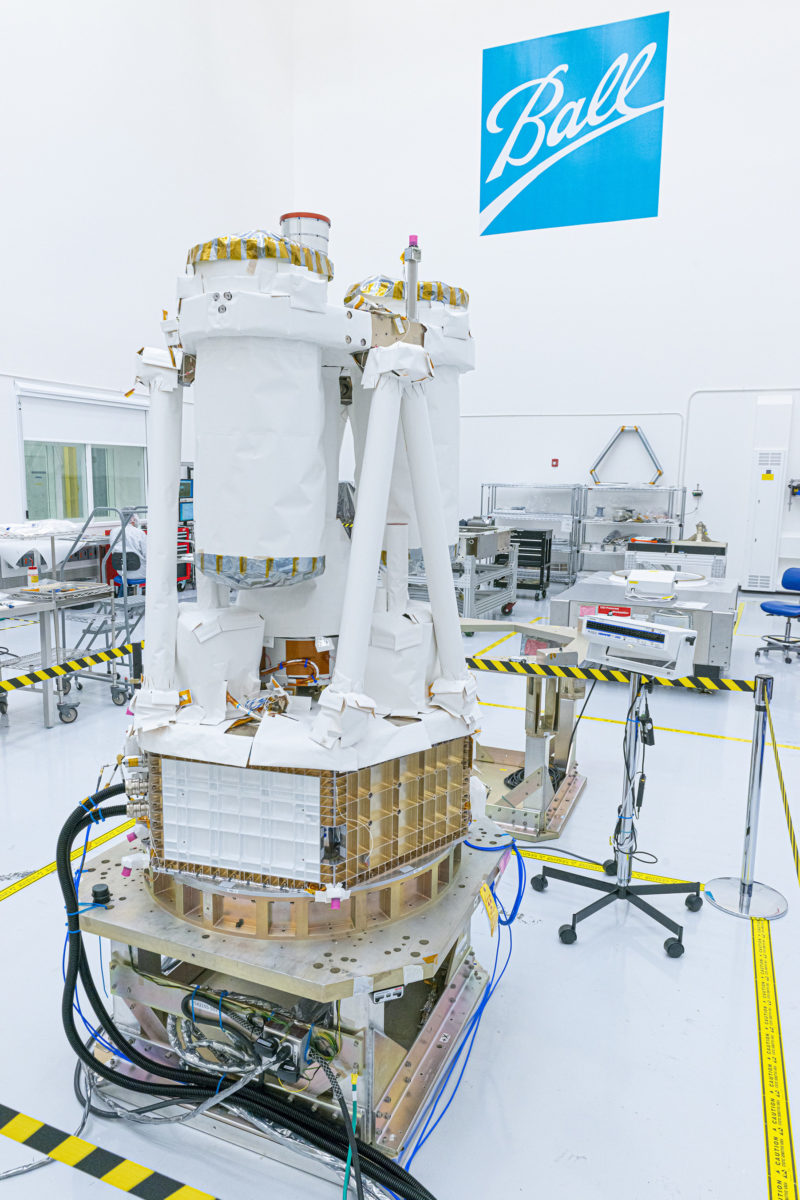
Led by Principal Investigator Martin Weisskopf of NASA’s Marshall Space Flight Center (MSFC) in Huntsville, Ala., the mission was cost-capped at $188 million, including the launch vehicle and post-launch operations and data analysis.
In June 2017, a key international partner in the form of ASI came aboard, with Italy committing to fabricate IXPE’s three polarization-sensitive X-ray detectors and providing the services of its equatorial ground station in Malindi, Kenya.
For its part, NASA would provide the X-ray telescopes and conduct end-to-end calibration and science operations, with Ball Aerospace of Broomfield, Colo., selected to build and integrate the spacecraft.
In August 2018, Ball completed the Preliminary Design Review (PDR) for IXPE, leveraging its Ball Configurable Platform (BCP) satellite “bus” for the mission, which it described as carrying “a broad spectrum of capabilities”, including high reliability and proven stability and pointing performance.
Specifically, IXPE weighs 740 pounds (340 kilograms) and is about the same size as a small refrigerator. Ball completed the Mission Critical Design Review (M-CDR) in July 2019, a milestone which permitted IXPE to progress into hardware construction and integration.
Original plans envisaged IXPE riding Northrop Grumman Corp.’s Pegasus-XL air-launched booster to orbit in 2020, but in July 2019 SpaceX received the $50.3 million contract to launch the spacecraft via its workhorse Falcon 9 booster from historic Pad 39A at the Kennedy Space Center (KSC) in Florida.
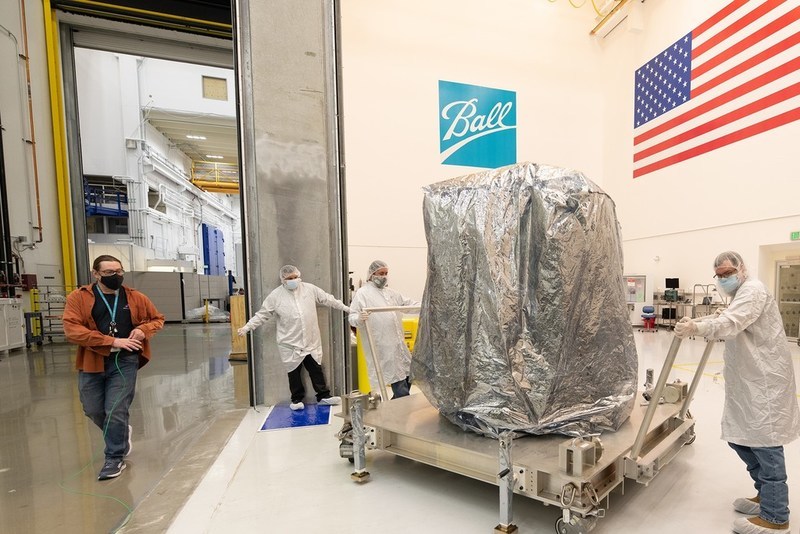
By this point, launch had shifted to no earlier than April 2021, but the use of the Falcon 9 allowed IXPE’s orbital altitude to be raised from 335 miles (540 kilometers) to as high as 370 miles (600 kilometers).
But the worldwide march of the COVID-19 coronavirus pandemic uniquely tested the program. NASA delayed the assembly and integration of IXPE’s mirror modules in March 2020, amid new scheduling and a reorganization of timelines. At length, in September of last year, the mirror modules departed MSFC, bound for Ball’s Colorado facility for integration into the IXPE spacecraft.
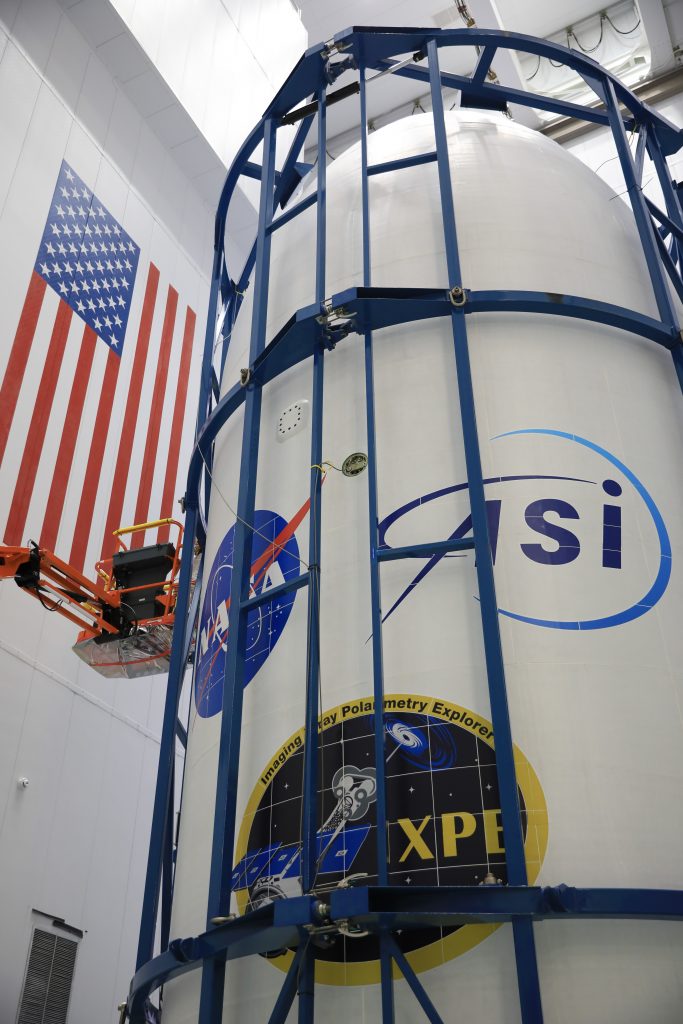
“As an international project, the IXPE team faced a lot of unexpected challenges in the face of the COVID-19 pandemic,” explained Janice Houston, the program’s lead systems engineer at MSFC. “We have learned a lot about overcoming logistical difficulties: how to ship the hardware from one place to another during lockdown and how to remotely supervise and monitor handling and testing.”
Last January, Ball completed spacecraft and payload assembly operations and pressed directly into a lengthy campaign of environmental testing, before delivering IXPE to Cape Canaveral Space Force Station, Fla., for launch preparations on 5 November.
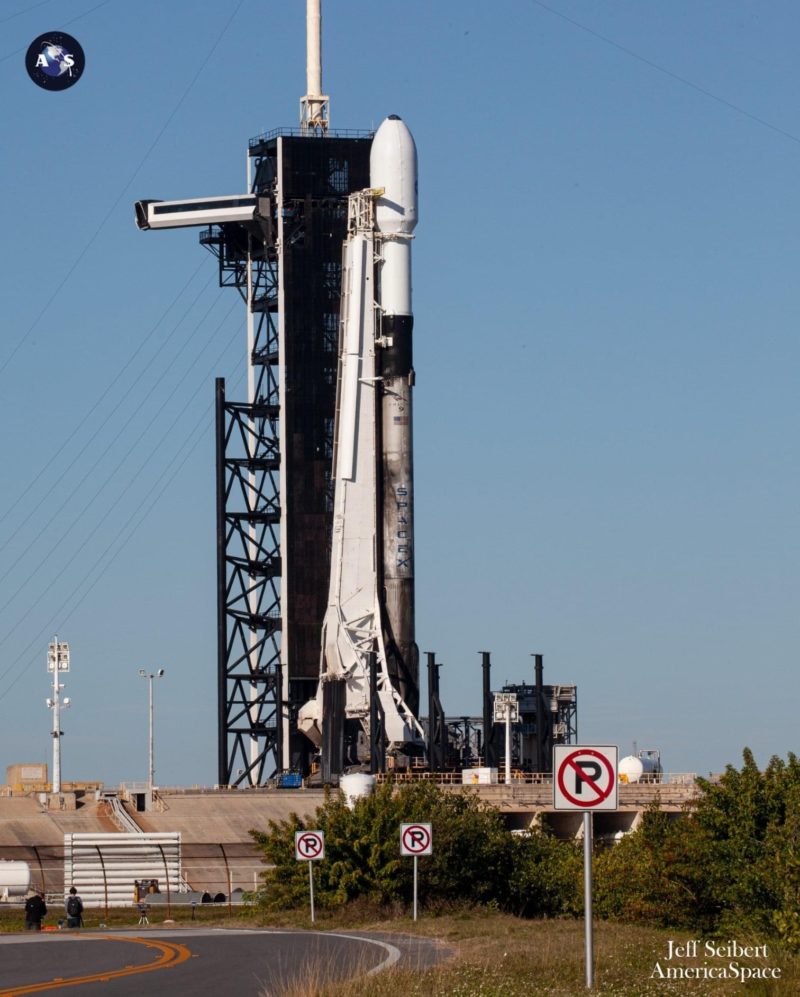
This campaign commenced on the 8th, with a carefully choreographed ballet of operations to verify IXPE’s health and mate the spacecraft to the payload adapter ring. Multi-layered insulation was installed to furnish thermal protection and covers for optics and sensitive instruments were removed. Last Wednesday, IXPE was encapsulated within the Falcon 9’s bullet-like payload fairing for launch.
Elsewhere, the two-stage rocket itself was coming together. For today’s mission, a brand-new second stage was paired with a veteran core stage, tail-numbered “B1061”. The latter became only the seventh Falcon 9 in under two years to log a fifth launch.
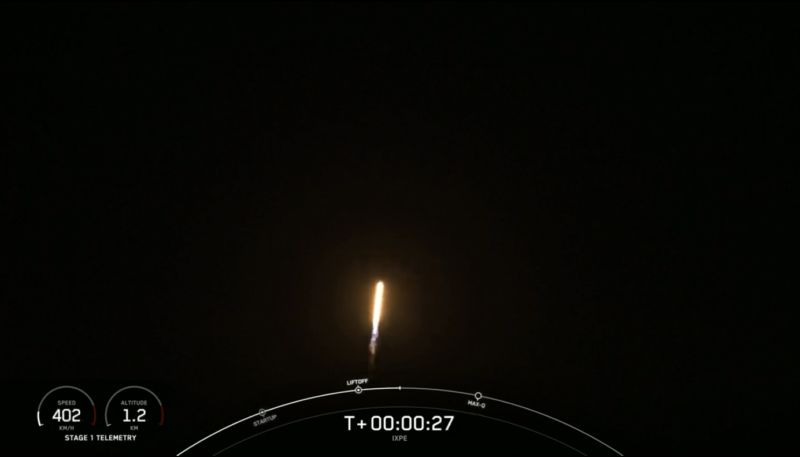
B1061 entered the SpaceX fleet to great fanfare in November 2020, when she lifted Dragon Resilience to the International Space Station (ISS), carrying Crew-1 astronauts Mike Hopkins, Victor Glover, Shannon Walker and Soichi Noguchi.
It was the first crew-carrying U.S. launch in the hours of darkness for more than a decade, since the twilight of the Space Shuttle Program. B1061 also lifted Crew-2 astronauts Shane Kimbrough, Megan McArthur, Aki Hoshide and Thomas Pesquet to the ISS aboard Dragon Endeavour last April.
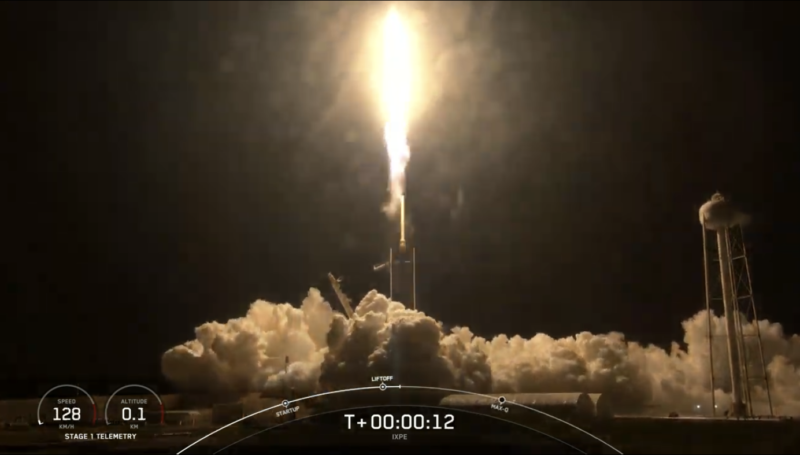
Third and fourth flights followed in quick succession, delivering SiriusXM’s high-powered SXM-8 broadcasting satellite towards geostationary orbit in early June and the CRS-23 Cargo Dragon—flying under the second-phase Commercial Resupply Services (CRS2) contract with NASA—at the end of August.
In readiness for IXPE, the 230-foot-tall (70-meter) Falcon 9 was transported to Pad 39A and put through a customary Static Fire Test of her nine Merlin 1D+ first-stage engines last Saturday. Completion of this milestone allowed SpaceX to formally take aim on a 90-minute “window”, opening at 1 a.m. EST Thursday, 9 December.
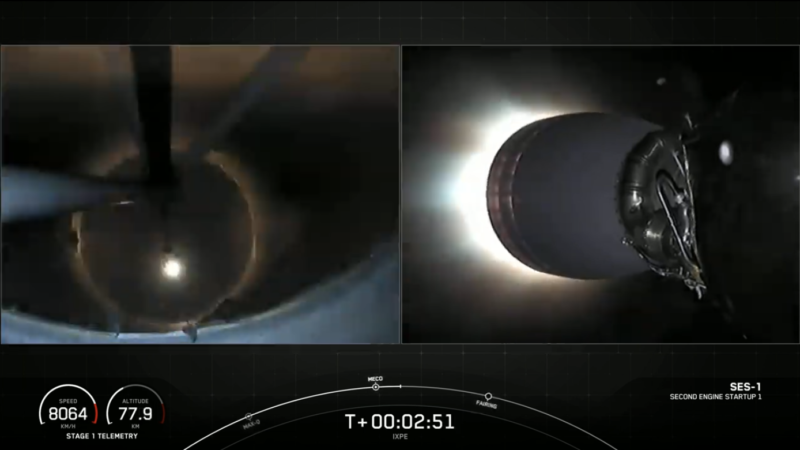
Weather conditions for the opening attempt were predicted to be around 90 percent, with an expected deterioration to 80 percent in the event of a 24-hour scrub and turnaround to Friday.
“A weak boundary over Central Florida will be pulled north by a developing low-pressure area,” noted the 45th Weather Squadron at Patrick Space Force Base in a Tuesday update. “This system will move along the Atlantic Seaboard…as a high-pressure builds back into the Space Coast.” This was expected to produce a slight increase in cloud coverage and rain chances, with Thursday’s opening launch attempt threatened by the slight chance of violating the Cumulus Cloud Rule.
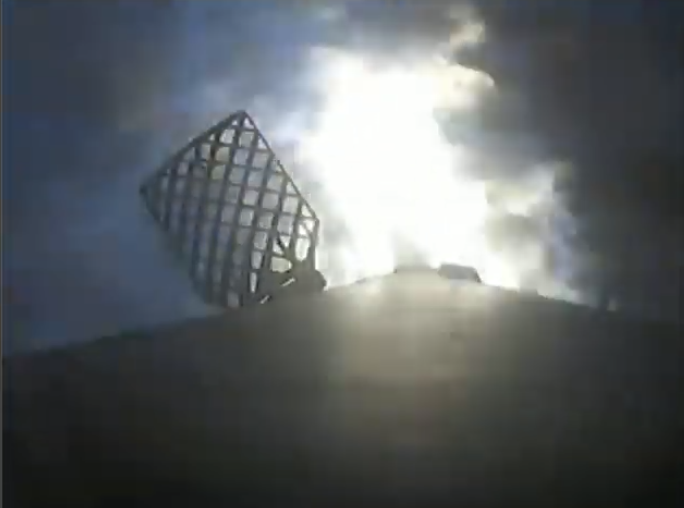
With a liftoff thrust of 1.5 million pounds (680,000 kilograms), B1061 took flight precisely on the opening of Thursday’s 90-minute window and powered smoothly into the night.
It was the third launch in the hours of darkness from the Space Coast in less than a week, following an after-sunset Falcon 9 flight last Thursday and Tuesday’s pre-dawn mission by a United Launch Alliance (ULA) Atlas V with the many-months-delayed Space Test Program (STP)-3 payload.
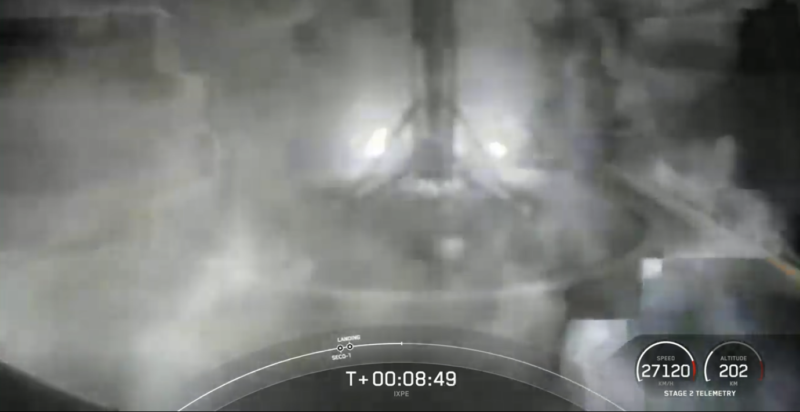
B1061 separated from the stack at 2.5 minutes into the flight and returned to her fifth on-point landing on the deck of an Autonomous Spaceport Drone Ship (ASDS), in this case “Just Read the Instructions”, some 390 miles (630 kilometers) offshore in the Atlantic Ocean.
Meanwhile, with the core stage gone, the Merlin 1D+ Vacuum engine of the second stage roared to life for six minutes to lift IXPE to its desired altitude. Payload separation occurred at 33 minutes into the mission. One minute later, the spacecraft unfurled its solar arrays. And about 40 minutes after launch, mission operators received the first spacecraft telemetry data.
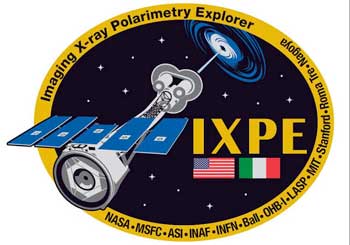
Fully deployed in space, IXPE measures 17 feet (5.2 meters) tall and 3.5 feet (1.1 meters) in diameter. Its solar array, which measures almost nine feet (2.7 meters) when fully unfurled, will afford electrical power for a two-year voyage of exploration.
IXPE is tasked with investigating some of the most exotic objects in the known Universe and will map the magnetic fields of black holes, neutron stars, pulsars, supernova remnants, magnetars, quasars and Active Galactic Nuclei (AGN). The polarization of high-energy X-ray radiation from these objects’ environs may unveil clues about their inherent physics and furnish insights into the high-temperature conditions which led to their formation.
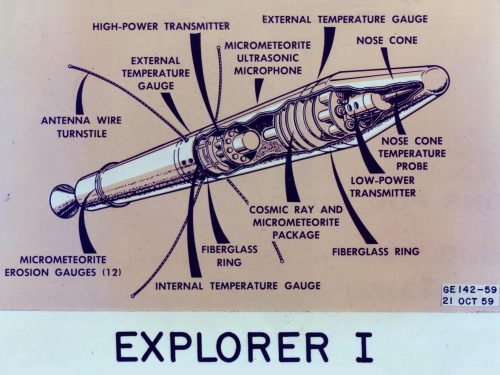
As an Explorer-class mission, IXPE can trace a direct line of ancestry from America’s first successful artificial satellite, Explorer 1, launched more than six decades ago in January 1958.
All told, over 90 missions of scientific exploration have received “Explorer” designations, with objectives running the gamut from radiation and energetic particles to magnetospheric research and gamma-ray astrophysics to atmospheric observations. Still others have conducted research in radio, infrared, ultraviolet and—like IXPE—X-ray astronomy.




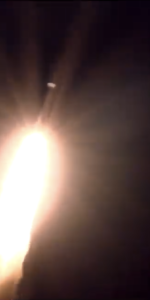
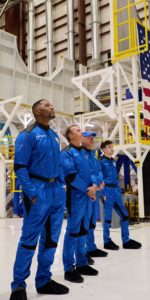
4 Comments
4 Pings & Trackbacks
Pingback:SpaceX Launches Second Mission in 15 Hours, CRS-24 Up Next – AmericaSpace
Pingback:SpaceX Launches Short-Notice CSG-2, Readies for Starlink, Classified Missions Next – AmericaSpace
Pingback:SpaceX Completes Third Mission in Four Days, Pushes Starlink Count Towards 2,100 – AmericaSpace
Pingback:SpaceX Launches Transporter-5 Rideshare , Wraps Up Multi-Mission May - AmericaSpace